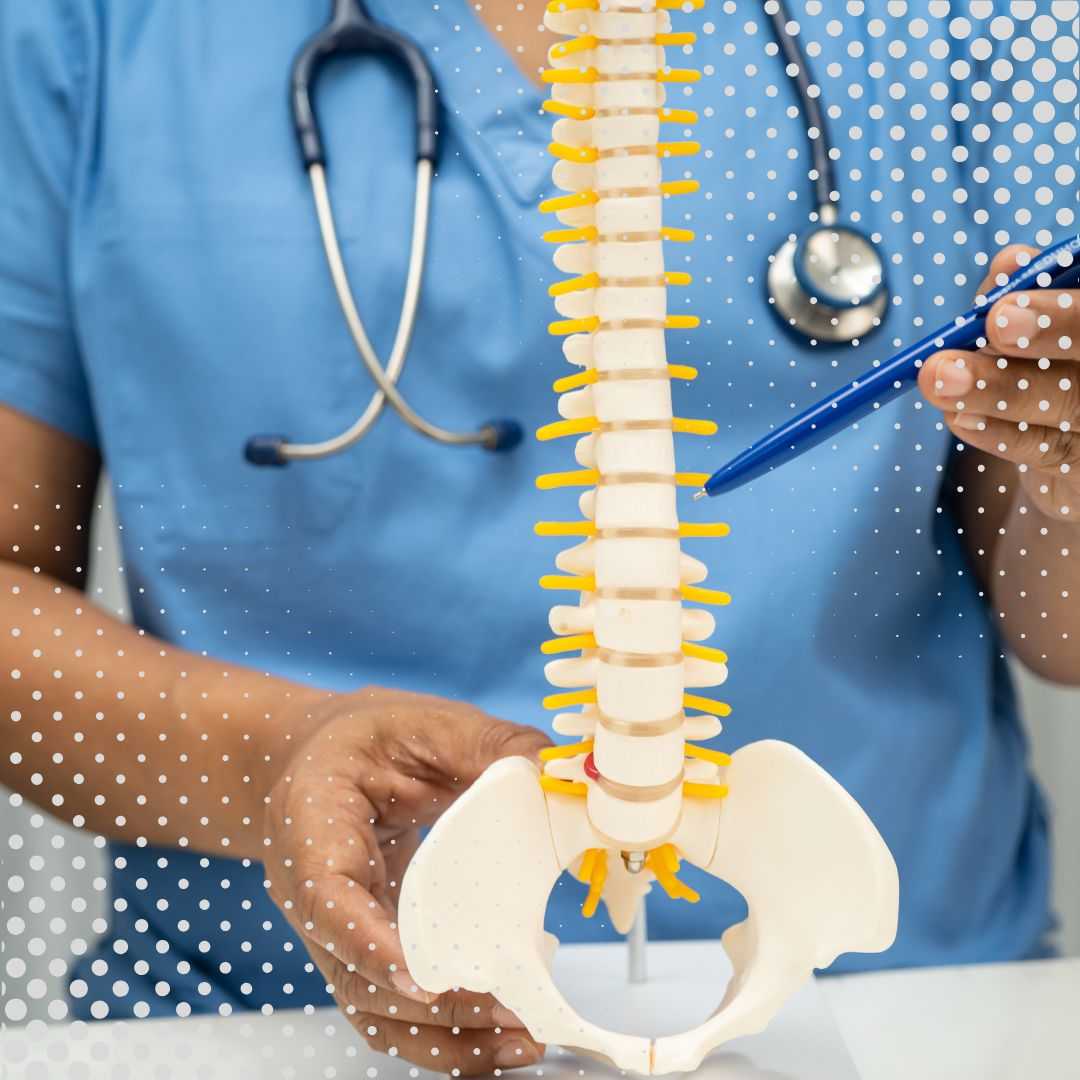
Finding Relief: Your Guide to Incisional Ventral Hernia Repair
Living with an incisional ventral hernia can be a source of constant discomfort, affecting everything from daily activities to your overall quality of life. This type of hernia occurs when tissues push through a weakened area in the abdominal wall, specifically at the site of a previous surgical incision. It’s a common complication that can arise months or even years after abdominal surgery, leading to a visible bulge, pain, and sometimes more serious complications.
If you’ve noticed a new lump or experienced persistent discomfort near an old surgical scar, you’re not alone. Many individuals search for answers to questions like "what is an incisional hernia?" or "how do they fix a ventral hernia?" The good news is that Incisional Ventral Hernia Repair is a well-established surgical solution designed to bring lasting relief and restore your abdominal wall integrity. This comprehensive guide will walk you through everything you need to know about the procedure, from understanding its causes and symptoms to exploring treatment options, recovery, and the compelling reasons why many patients consider seeking this repair abroad.
Whether you're struggling with "abdominal pain after surgery with a bulge" or researching "best treatment for incisional hernia," understanding your options is the first step towards a healthier, more comfortable future. Let’s delve into how this vital procedure can help you reclaim your well-being.
What are the symptoms of an incisional ventral hernia?
Recognizing the symptoms of an incisional ventral hernia is crucial for early diagnosis and treatment. Most commonly, patients experience:
- A Visible Bulge or Lump: This is the most telling sign, appearing near or directly at the site of a past abdominal surgical incision. The bulge might be more noticeable when you stand, cough, strain, or lift heavy objects, and may disappear when you lie down. Patients often search for "lump near old surgery scar" or "abdominal bulge after C-section."
- Pain or Discomfort: You might feel a dull ache, sharp pain, or a sense of pressure or heaviness in the area of the bulge. This discomfort often worsens with physical activity and can sometimes radiate to other parts of the abdomen. Keywords like "pain at surgical incision hernia" are common.
- Nausea or Vomiting: In more severe cases, especially if a portion of the intestine becomes trapped (incarcerated hernia), you might experience digestive issues like nausea, vomiting, or constipation. This is a medical emergency and requires immediate attention.
- Changes in Bowel Habits: Less frequently, some patients report altered bowel movements, such as constipation, if the hernia is affecting the intestines.
- Redness or Tenderness: If the hernia becomes incarcerated or strangulated (blood supply cut off), the skin over the bulge may become red, tender, or discolored, indicating a critical situation.
It’s important to note that some small incisional hernias might not cause any symptoms at all and are only discovered during a routine physical examination.
What causes an incisional ventral hernia and who is at risk?
An incisional ventral hernia specifically develops through a scar from a previous abdominal surgery. The underlying cause is the failure of the surgical wound to heal completely and strong enough, leading to a weak spot in the abdominal wall.
Common factors contributing to the development of an incisional hernia and who is at risk include:
- Surgical Technique: The way the initial incision was closed can play a role.
- Post-operative Complications: Wound infections, hematomas (blood clots), or seromas (fluid collections) after the initial surgery can impair healing.
- Increased Abdominal Pressure: Any activity that puts significant strain on the abdominal wall can push tissues through a weak spot. This includes:
- Heavy lifting
- Chronic coughing (e.g., from smoking or lung disease)
- Straining during bowel movements (chronic constipation)
- Pregnancy
- Obesity
- Poor Wound Healing: Factors that can impede proper wound healing include:
- Obesity
- Malnutrition
- Diabetes
- Smoking
- Certain medications (e.g., corticosteroids)
- Age (older patients may have slower healing)
- Underlying Medical Conditions: Conditions that weaken connective tissue, such as Ehlers-Danlos syndrome, can also increase risk.
Understanding these risk factors can help in preventive measures and also in understanding why an existing hernia might be worsening.
What types of Incisional Ventral Hernia Repair procedures are available?
Several surgical approaches are used to repair incisional ventral hernias, tailored to the size, location, and complexity of the hernia, as well as the patient's overall health:
- Open Hernia Repair (Laparotomy):
- Description: This traditional method involves a single, larger incision made directly over the hernia. The surgeon then pushes the herniated tissue back into the abdomen, excises the old scar tissue, and repairs the defect by sewing the strong tissues of the abdominal wall together.
- Mesh Placement: Often, a synthetic or biological mesh is used to reinforce the weakened area, reducing the risk of recurrence. The mesh is typically placed either on top of the muscle layers (onlay), between muscle layers (sublay/retromuscular), or directly under the muscle layer (underlay).
- Best for: Large, complex, or recurrent hernias, or cases requiring significant reconstruction. Patients often search for "open incisional hernia repair with mesh."
- Laparoscopic Hernia Repair (Minimally Invasive):
- Description: This approach uses several small incisions, through which a laparoscope (a thin, lighted tube with a camera) and specialized surgical instruments are inserted. The surgeon views the internal organs on a monitor while performing the repair. The hernia sac is reduced, and a mesh is almost always placed from the inside (intraperitoneal onlay mesh - IPOM) and secured.
- Benefits: Smaller incisions, less pain, faster recovery time, and reduced risk of wound complications compared to open surgery. Patients might look for "laparoscopic ventral hernia surgery" or "minimally invasive hernia repair."
- Best for: Smaller to medium-sized hernias, especially those without significant complications.
- Robotic-Assisted Hernia Repair:
- Description: Similar to laparoscopic surgery, but the surgeon uses a robotic system to control the instruments. This provides enhanced dexterity, 3D visualization, and precision, particularly for complex repairs or when placing mesh in difficult anatomical locations.
- Benefits: Offers the advantages of laparoscopic surgery with potentially even greater precision for complex cases. Searches like "robotic incisional hernia repair" are increasing.
- Best for: Complex or recurrent hernias where a minimally invasive approach is desired, offering the surgeon more control.
The choice of procedure depends on many factors, including the hernia's characteristics, the patient's medical history, and the surgeon's expertise.
Am I eligible for Incisional Ventral Hernia Repair?
Eligibility for Incisional Ventral Hernia Repair is determined by a comprehensive evaluation by a surgeon. Generally, most individuals diagnosed with an incisional hernia are candidates for repair, particularly if they are experiencing symptoms or if the hernia is growing. Key factors considered include:
- Diagnosis of Incisional Hernia: Confirmation through physical examination and sometimes imaging tests like CT scans. Patients often ask, "when is incisional hernia surgery recommended?"
- Symptomatic Hernia: If the hernia is causing pain, discomfort, or is interfering with daily activities.
- Asymptomatic but Growing Hernia: Even without symptoms, a growing hernia may be recommended for repair to prevent future complications like incarceration or strangulation.
- Overall Health: Patients should be in reasonably good health to undergo surgery. Certain pre-existing conditions (e.g., severe heart disease, uncontrolled diabetes) might increase surgical risks, and these need to be optimized before surgery.
- Lifestyle Factors: Surgeons often advise patients to address certain lifestyle factors before surgery to improve outcomes and reduce recurrence risk:
- Smoking Cessation: Smoking significantly impairs wound healing and increases the risk of recurrence and complications.
- Weight Management: For obese patients, weight loss is often recommended as it reduces intra-abdominal pressure and improves surgical results. Patients might search for "weight loss before hernia surgery."
- Control of Chronic Conditions: Conditions like diabetes and chronic cough should be well-managed.
While repair is generally recommended to prevent complications, very small, asymptomatic hernias might be monitored in some cases, especially in elderly patients with significant co-morbidities where surgical risks outweigh benefits.
What is the recovery time and what can I expect after Incisional Ventral Hernia Repair?
Recovery from Incisional Ventral Hernia Repair depends significantly on the type of surgery performed (open vs. laparoscopic/robotic), the size of the hernia, and individual patient factors. Patients frequently ask, "how long is recovery from incisional hernia surgery?" or "what to expect after ventral hernia repair?"
- Immediately After Surgery (First Few Days):
- Pain Management: You will experience pain and discomfort at the incision site, managed with prescribed pain medication.
- Mobility: Early mobilization (walking) is encouraged to prevent complications like blood clots and aid recovery, but strenuous activity is strictly prohibited.
- Diet: You'll start with clear liquids and gradually progress to a normal diet as tolerated.
- Hospital Stay: Typically 1-3 days for open repair, sometimes same-day discharge for laparoscopic/robotic if no complications.
- First 1-2 Weeks:
- Pain and Swelling: Residual pain, bruising, and swelling around the incision are common and gradually subside.
- Activity Restrictions: Lifting anything heavier than a gallon of milk (approx. 10 lbs) is generally restricted. Avoid strenuous activities, pushing, or pulling.
- Wound Care: Keep the incision clean and dry. Follow specific instructions for dressing changes.
- Return to Light Activities: Most patients can return to light office work and daily activities that don't involve straining within 1-2 weeks.
- Weeks 2-6 and Beyond:
- Gradual Increase in Activity: Your surgeon will advise on gradually increasing physical activity.
- Full Recovery: Full recovery and return to all normal activities, including heavy lifting and strenuous exercise, typically take 4-8 weeks for laparoscopic/robotic repair and 6-12 weeks for open repair, depending on the complexity.
- Long-Term Care: Continue to avoid excessive straining, maintain a healthy weight, and follow a balanced diet to prevent recurrence.
It’s important to attend all follow-up appointments and communicate any concerns or unusual symptoms to your medical team. Listen to your body and avoid pushing yourself too hard during the recovery period.
What are the risks and potential side effects of incisional hernia surgery?
Like any surgical procedure, Incisional Ventral Hernia Repair carries potential risks and side effects, though serious complications are relatively rare. It's important to discuss these thoroughly with your surgeon. Patients often search for "risks of incisional hernia repair" or "complications of ventral hernia surgery."
Potential risks include:
- Infection: At the surgical site (wound infection) or deeper. This risk is higher in open surgeries and in patients with certain risk factors like obesity or diabetes.
- Bleeding/Hematoma: Collection of blood under the skin, which may require drainage.
- Seroma: Collection of clear fluid under the skin, also potentially requiring drainage. This is quite common after hernia repair, especially when mesh is used.
- Pain: While surgery aims to alleviate pain, some patients may experience chronic pain (post-herniorrhaphy pain) at the surgical site, sometimes due to nerve irritation.
- Numbness or Nerve Damage: Nerves around the incision can be damaged or irritated, leading to temporary or, rarely, permanent numbness or altered sensation.
- Hernia Recurrence: Despite repair, there is a small chance the hernia can return, especially if initial risk factors (e.g., obesity, heavy lifting) are not managed. This is why mesh is frequently used to strengthen the repair.
- Mesh-Related Complications: If surgical mesh is used, potential complications include:
- Mesh infection (rare but serious)
- Mesh migration
- Erosion into adjacent organs
- Chronic pain or discomfort associated with the mesh
- Rejection of the mesh (very rare)
- Adhesions: Scar tissue can form inside the abdomen, potentially leading to bowel obstruction, though this is rare after modern hernia repairs.
- General Anesthesia Risks: As with any surgery requiring anesthesia, risks include adverse reactions to medication, breathing problems, or cardiovascular events.
Your surgeon will explain how these risks apply to your specific case and what steps are taken to minimize them.
How much does Incisional Ventral Hernia Repair cost worldwide?
The cost of Incisional Ventral Hernia Repair can vary dramatically depending on geographic location, the complexity of the hernia, the surgical technique used (open, laparoscopic, robotic), the type of mesh (if used), hospital fees, surgeon's fees, anesthesia costs, and pre- and post-operative care. Patients often research "incisional hernia repair cost" or "cost of ventral hernia surgery abroad."
Here’s an estimated cost comparison for Incisional Ventral Hernia Repair in various countries:
| Country | Estimated Cost Range (USD) | Notes |
|---|---|---|
| United States | $7,000 - $25,000+ | High costs, but widely covered by insurance. Prices vary by state and facility. |
| Canada | $5,000 - $15,000+ | Public healthcare covers residents; private options for non-residents or those seeking faster access. |
| Mexico | $3,000 - $7,000 | Popular for medical tourists due to proximity to the US and lower costs. |
| Turkey | $4,000 - $8,000 | Growing medical tourism hub with modern facilities and experienced surgeons. |
| India | $2,500 - $6,000 | Very competitive prices with high-quality care in accredited hospitals. |
| Thailand | $3,500 - $7,500 | Known for excellent patient care and modern hospitals, combined with tourism opportunities. |
| South Korea | $5,000 - $10,000 | Advanced medical technology and highly skilled surgeons, slightly higher costs than other Asian destinations. |
*These are estimated costs and can vary significantly based on individual factors, clinic, surgeon's experience, and the specific details of the procedure. It's essential to get a personalized quote.
Why consider Incisional Ventral Hernia Repair abroad for medical tourism?
Medical tourism for Incisional Ventral Hernia Repair has become increasingly popular for several compelling reasons:
- Significant Cost Savings: This is often the primary driver. Procedures in countries like Mexico, India, Turkey, or Thailand can be 50-80% cheaper than in the US or Western Europe, even when factoring in travel and accommodation. Patients often search for "affordable hernia surgery abroad" or "save money on ventral hernia repair."
- Access to High-Quality Care and Expertise: Many international hospitals boast JCI (Joint Commission International) accreditation, state-of-the-art technology, and highly experienced surgeons, many of whom are US or European board-certified or have received international training.
- Reduced Wait Times: In some countries with public healthcare systems, waiting lists for elective surgeries can be long. Traveling abroad often allows patients to schedule their surgery much sooner.
- Privacy and Anonymity: Some patients prefer to undergo medical procedures away from their home country for privacy reasons.
- Combine Treatment with a Vacation: For many, medical tourism offers the unique opportunity to recover in a pleasant environment, turning a medical necessity into a more relaxed experience. You might even find yourself searching "hernia surgery and vacation package."
- Comprehensive Packages: Many clinics and facilitators offer all-inclusive packages that cover surgery, accommodation, airport transfers, and even translation services, simplifying the process for international patients.
For those without adequate insurance coverage or facing prohibitive costs at home, medical tourism presents a viable and attractive alternative for quality incisional ventral hernia repair.
Which countries offer the best value for Incisional Ventral Hernia Repair?
When seeking the "best countries for hernia surgery" or "top destinations for incisional hernia repair," several nations stand out for their combination of affordability, quality, and patient-centric services:
- Mexico:
- Why: Proximity to the US, significant cost savings, numerous JCI-accredited facilities, and experienced surgeons who often speak English. Cities like Tijuana, Cancun, and Guadalajara are popular.
- Value: High-quality care at a fraction of US prices, often with a cultural experience.
- Turkey:
- Why: A rapidly growing medical tourism destination, boasting modern hospitals equipped with the latest technology, skilled surgeons, and excellent patient care. Istanbul and Ankara are key cities.
- Value: Very competitive pricing, advanced facilities, and a bridge between European and Asian healthcare standards.
- India:
- Why: Known for its highly skilled doctors, world-class hospitals, and extremely cost-effective treatments. Many surgeons are trained internationally.
- Value: Some of the lowest prices globally without compromising on quality, especially in major cities like Delhi, Mumbai, and Chennai.
- Thailand:
- Why: Renowned for its hospitality, excellent private hospitals, and skilled medical professionals. Patients often combine treatment with a relaxing recovery in a beautiful setting. Bangkok and Phuket are popular medical hubs.
- Value: High-quality care in luxurious settings, often at a lower cost than Western countries, coupled with a pleasant travel experience.
- South Korea:
- Why: Leading in medical technology and surgical innovation, with highly efficient healthcare systems and specialized centers.
- Value: Offers cutting-edge treatment, albeit at slightly higher prices than other Asian destinations, but still significantly less than Western countries.
These countries have well-established medical tourism infrastructures, making the entire process, from inquiry to recovery, smoother for international patients.
What should I expect when traveling abroad for Incisional Ventral Hernia Repair?
Traveling abroad for a medical procedure like Incisional Ventral Hernia Repair involves several steps. Understanding the process can ease any anxieties. Patients often look for "medical travel for hernia surgery" or "preparing for overseas hernia repair."
- Initial Consultation and Planning:
- Research: Identify potential countries, clinics, and surgeons.
- Medical Records: Provide your medical history, diagnostic images (e.g., CT scan), and current health status to the chosen clinic for an initial assessment and treatment plan.
- Virtual Consultation: Many clinics offer online consultations with the surgeon to discuss your case, clarify expectations, and answer questions.
- Quotation and Package: Receive a detailed cost estimate, often bundled to include surgery, hospital stay, anesthesia, and sometimes accommodation or airport transfers.
- Travel Arrangements:
- Visa and Passport: Ensure your travel documents are in order.
- Flights and Accommodation: Book your travel. Consider staying close to the hospital.
- Travel Insurance: Obtain travel insurance that covers medical emergencies abroad.
- Pre-Operative Stage (Upon Arrival):
- In-Person Consultations: Meet your surgeon and medical team.
- Pre-Operative Tests: Undergo necessary blood tests, ECG, or other assessments to ensure you are fit for surgery.
- Language: Most reputable clinics have English-speaking staff or provide translators.
- Surgery and Hospital Stay:
- Undergo the procedure as planned.
- Hospital stay typically lasts 1-3 days, depending on the procedure type and your recovery.
- Recovery and Post-Operative Care:
- Local Recovery: Plan to stay in the destination country for an additional 1-3 weeks (or longer for open surgery) for initial recovery and follow-up checks.
- Medication and Instructions: Receive detailed instructions on wound care, activity restrictions, and medication.
- Follow-up: Attend post-operative appointments to monitor healing.
- Return Home:
- You will be cleared for travel once the medical team deems it safe.
- Continue your recovery at home, adhering to all medical advice.
Using a reputable medical tourism facilitator like PlacidWay can significantly simplify this process, providing guidance and support every step of the way.
How can I ensure safety and quality when choosing a clinic for Incisional Ventral Hernia Repair abroad?
Ensuring safety and quality is paramount when considering medical treatment abroad. Don't compromise on these factors, even for cost savings. Look for these indicators when choosing a clinic for your Incisional Ventral Hernia Repair:
- Accreditation:
- International Accreditation: Look for hospitals accredited by organizations like the Joint Commission International (JCI). JCI accreditation signifies that a hospital meets stringent international patient safety and quality-of-care standards. Many patients search for "JCI accredited hospitals for hernia surgery."
- Local Accreditations: Check for recognized national accreditations in the destination country.
- Surgeon Credentials and Experience:
- Board Certification: Verify that the surgeon is board-certified in general surgery or a relevant specialty.
- Experience: Inquire about the surgeon's experience specifically with incisional ventral hernia repairs, including the number of procedures performed and their success rates.
- Specialization: Some surgeons specialize in hernia surgery or abdominal wall reconstruction.
- Technology and Facilities:
- Ensure the clinic uses modern equipment and surgical techniques.
- The facility should be clean, well-maintained, and adhere to international hygiene standards.
- Patient Reviews and Testimonials:
- Look for independent patient reviews, testimonials, and success stories. Websites like PlacidWay often feature verified patient feedback.
- Be wary of clinics with only glowing, unverified reviews.
- Transparent Communication:
- The clinic should be responsive, provide clear and detailed information, and ensure you understand the procedure, risks, costs, and recovery plan.
- Ensure there are clear communication channels, including for emergencies.
- Post-Operative Care Plan:
- Discuss the aftercare plan, including follow-up appointments, medication, and instructions for when you return home.
- Understand who to contact if you have concerns after returning to your home country.
- Medical Tourism Facilitator:
- Using a reputable medical tourism facilitator can help vet clinics and surgeons, handle logistics, and provide an extra layer of support and assurance.
An informed decision, backed by thorough research, is your best defense against potential issues.
What are some patient success stories for Incisional Ventral Hernia Repair from abroad?
Many individuals have found life-changing relief and exceptional care by choosing Incisional Ventral Hernia Repair abroad. While specific personal stories are best found on patient forums or through medical tourism providers, here are composite examples reflecting common positive outcomes:
- John's Journey to Mexico: John, a 55-year-old from Texas, had an incisional hernia after an appendectomy years ago. The bulge had grown, causing persistent pain and limiting his active lifestyle. Facing a $18,000 quote in the US (with a high deductible), he opted for a JCI-accredited hospital in Tijuana, Mexico. His laparoscopic repair, including mesh, cost him $5,500. "The care was excellent, the facility was spotless, and the surgeon was highly skilled," John reported. "I recovered comfortably in a nearby hotel and was back to light work within two weeks. It was worth every penny, and I saved a fortune." John often shares his "hernia surgery success story Mexico."
- Sarah's Experience in Thailand: Sarah, a 48-year-old from the UK, suffered from a large incisional hernia post-C-section, leading to chronic discomfort. Discouraged by long NHS waiting lists, she chose a reputable hospital in Bangkok, Thailand. Her open repair with mesh cost approximately £4,000 (around $5,000 USD), which included a week's stay in a luxurious recovery suite. "The personalized attention from the nurses and doctors was phenomenal," Sarah shared. "I appreciated the clear communication, and my recovery was smooth. I even enjoyed exploring Bangkok for a few days before my flight home."
- Mark's Affordable Repair in India: Mark, a 62-year-old Australian, needed repair for a recurrent incisional hernia. After researching "affordable incisional hernia repair India," he connected with a hospital in Chennai. His robotic-assisted repair was priced at about $4,000 USD. Mark was particularly impressed by the advanced technology and the surgeon's expertise. "From my initial video consultation to my post-op care, everything was seamless. I'm now pain-free and can enjoy my retirement without worrying about my hernia," he said.
These stories highlight that quality, affordability, and patient satisfaction are achievable when pursuing Incisional Ventral Hernia Repair through medical tourism, provided careful research and planning are undertaken.
Take the Next Step with PlacidWay
Ready to explore treatment options abroad? Discover top clinics, compare prices, and get a free quote tailored to your needs with PlacidWay.
Laparoscopic Surgery | Best Medical Care










Share this listing